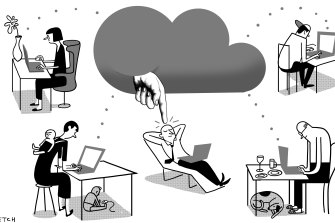Productivity Commission boss Michael Brennan and his troops have been giving the matter much thought and, as he revealed in a speech last week, such a radical change in the way we work would be produced by the interaction of various conflicting but powerful forces.
After all, it would be a return to the way we worked 300 years ago before the Industrial Revolution. Then, most people worked from home as farmers, weavers and blacksmiths and other skilled artisans. And, don’t forget, by today’s standards we were extremely poor.
What’s made us so much more prosperous? Advances in technology. But technology is the product of human invention. That invention could have pushed our lives in other directions.
Productivity isn’t producing more, it’s producing more with less. In particular, producing more of the goods and services we love to consume using less labour.
Why among the three “factors of production” – land and its raw materials, capital equipment and labour – is it labour we’ve always sought to minimise?

Because we run the economy to benefit ourselves, and it’s humans who do the labour. We’ve reduced physical labour, but now automation allows us to reduce routine mental labour.
It was the Industrial Revolution that increasingly drove us to the centralised workplace. Initially, the factory and the mine, then the office.
The move to most people working in a central location was driven by economic forces. Businesses saw the benefits – to them and their customers – of combining labour with large and expensive machinery, powered by a single source. Initially, steam.
“The factory provided a means for bosses to co-ordinate activity in real time, supervise workers and it also provided an efficient way to share knowledge – as did the office,” Brennan says.
So the central workplace reduced the cost of combining labour and capital, but did so by imposing transport costs – mainly on workers who had to get themselves from home to the central location and back.
For most of the 20th century, however, it got ever-cheaper to move people around, via steam, electricity, the internal-combustion engine and the aeroplane. So advances in transport technology reinforced the role of the central workplace. Over the past 30 years, however, the cost of moving people around has stopped falling. “We seem to have hit physical limits on speed; and congestion has meant that today it takes longer to move around our cities than was the case a few decades ago,” Brennan says.
This, of course, is why we fancy the idea of continuing to work from home. It’s only advances in computing and telecommunications technology that have made this possible. The cost of moving information has plummeted, while the cost of moving workers – in time and discomfort – has gone up.
